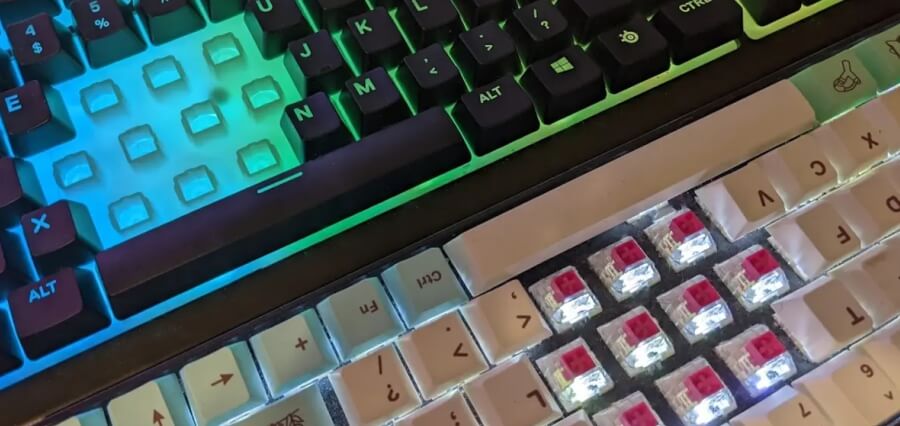Recognizing the Functionality of Membrane Switches for Interface Gadget
The functionality of membrane layer switches over represents a significant advancement in customer interface style, combining performance with visual flexibility. These buttons run through a multi-layered framework that translates customer interactions into electric signals, permitting both portable designs and strength against environmental aspects. As markets increasingly prioritize customer experience, understanding the subtleties of membrane button technology comes to be vital. What implications do these improvements hold for future applications, and how might they redefine customer communications throughout different devices?
What Are Membrane Buttons?
Membrane layer buttons are cutting-edge interface devices that help with individual interaction with digital tools. These versatile elements include numerous layers, including a graphic overlay, spacer, and a printed circuit layer. The design permits a seamless combination into different digital tools, boosting both the visual and useful facets of interface.
Membrane layer buttons are generally employed in a large range of applications, from household devices to commercial equipment and clinical tools. Their building and construction generally features a slim account, making them an excellent selection for portable layouts. The responsive comments provided by these buttons can be crafted to satisfy particular customer preferences, guaranteeing efficient interaction in between the user and the device.
Durability is another considerable advantage of membrane layer switches, as they are resistant to dirt, dampness, and chemicals, which improves their lifespan in requiring atmospheres. Additionally, these buttons can be personalized in regards to shape, dimension, and graphic design, permitting branding and user-specific functions. In general, membrane switches over represent a practical remedy for improving customer experience in electronic devices, incorporating performance with aesthetic charm in an effective fashion.
Exactly How Membrane Layer Switches Over Work
Operating on a simple concept, membrane layer switches make use of a layered building and construction to register customer input efficiently. Each button includes numerous layers, including a printed circuit layer, a spacer layer, and a top visuals layer, which are designed to function with each other perfectly. When a customer presses the top layer, it presses the spacer layer, bringing the conductive aspects of the circuit layer right into contact with each various other.
This call creates a closed circuit, signifying the device to execute a details function. The design enables for numerous configurations, including tactile comments, which can boost the user experience by supplying a physical experience upon activation. The products used in membrane buttons typically consist of versatile substrates, such as polyester or polycarbonate, which guarantee longevity and resilience against deterioration.

Secret Advantages of Membrane Layer Switches

Another significant advantage is their compactness. Membrane layer switches are slim and light-weight, which enables producers to save space in their tools without compromising functionality. This attribute is especially advantageous in applications where weight and quantity are critical factors to consider.
Additionally, membrane layer switches are immune to dust, wetness, and chemicals, enhancing their toughness. This resilience expands their lifespan and lowers the need for constant replacements, leading to cost financial savings in time.
In addition, the tactile responses provided by membrane buttons can be optimized to boost user communication. They can consist of features such as increased switches or audible clicks, enhancing functionality and customer experience.
Applications Across Industries
Customer interface gadgets using membrane layer buttons are common in a vast array of markets, showcasing their flexibility and capability. Membrane Switch. In the medical industry, membrane layer switches are important to tools such as analysis tools and patient tracking systems, where their longevity and convenience of cleaning are crucial for maintaining hygiene requirements. In the automotive industry, these buttons are utilized in dashboard controls and infomercial systems, giving a smooth and modern user interface for individuals.
Furthermore, the customer electronic devices market gain from membrane layer buttons in devices and portable tools, where portable style and easy to use user interfaces improve customer experience. Industrial applications additionally take advantage of membrane layer changes for control panels in machinery and automation systems, stressing their effectiveness and resistance to extreme atmospheres.
In the aerospace published here and defense industries, membrane buttons are used in cockpit controls and devices, where integrity and performance under severe conditions are critical. Additionally, the gaming sector progressively incorporates membrane layer buttons in controllers and game devices, adding to an interesting individual experience. Overall, the versatility of membrane layer switches allows their prevalent usage across countless industries, emphasizing their significance in modern-day customer interface style.
Future Fads in Membrane Layer Switch Modern Technology

Additionally, using advanced materials, such as polycarbonate and polyester films, is anticipated to climb, supplying boosted sturdiness and resistance to ecological stressors. These materials contribute to the general long life of membrane layer buttons, making them suitable for harsher industrial applications.
Additionally, the unification of smart innovation, including IoT connection, will certainly allow membrane layer description buttons to connect with other tools and systems, promoting a more interactive individual experience. This fad aligns with the expanding demand for wise gadgets across different fields, from medical care to consumer electronics.
Finally, personalization options are prepared for to expand, allowing manufacturers to develop bespoke remedies customized to details customer requirements and choices. These advancements will position membrane switches as vital elements in the development of interface technology.
Conclusion
To conclude, membrane layer switches over represent a critical advancement in interface modern technology, using a trusted and functional option for diverse digital applications. Their split construction facilitates portable design, while functions such as tactile feedback improve user communication. The toughness against ecological aspects further strengthens their utility across multiple sectors. As improvements in material scientific research and touch sensing modern technologies continue, the capability and applicability of membrane buttons are expected to broaden, reinforcing their relevance in modern digital devices.